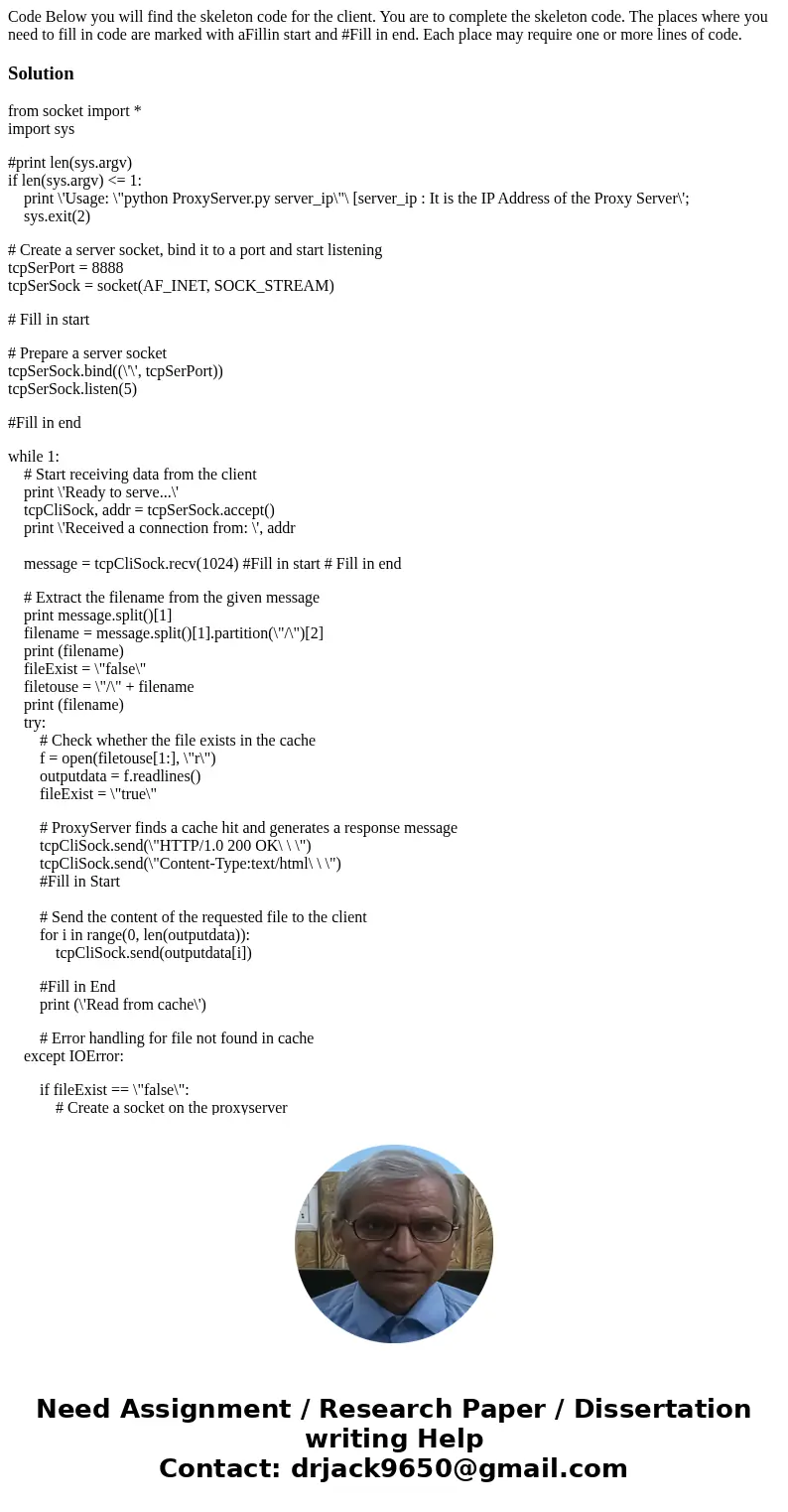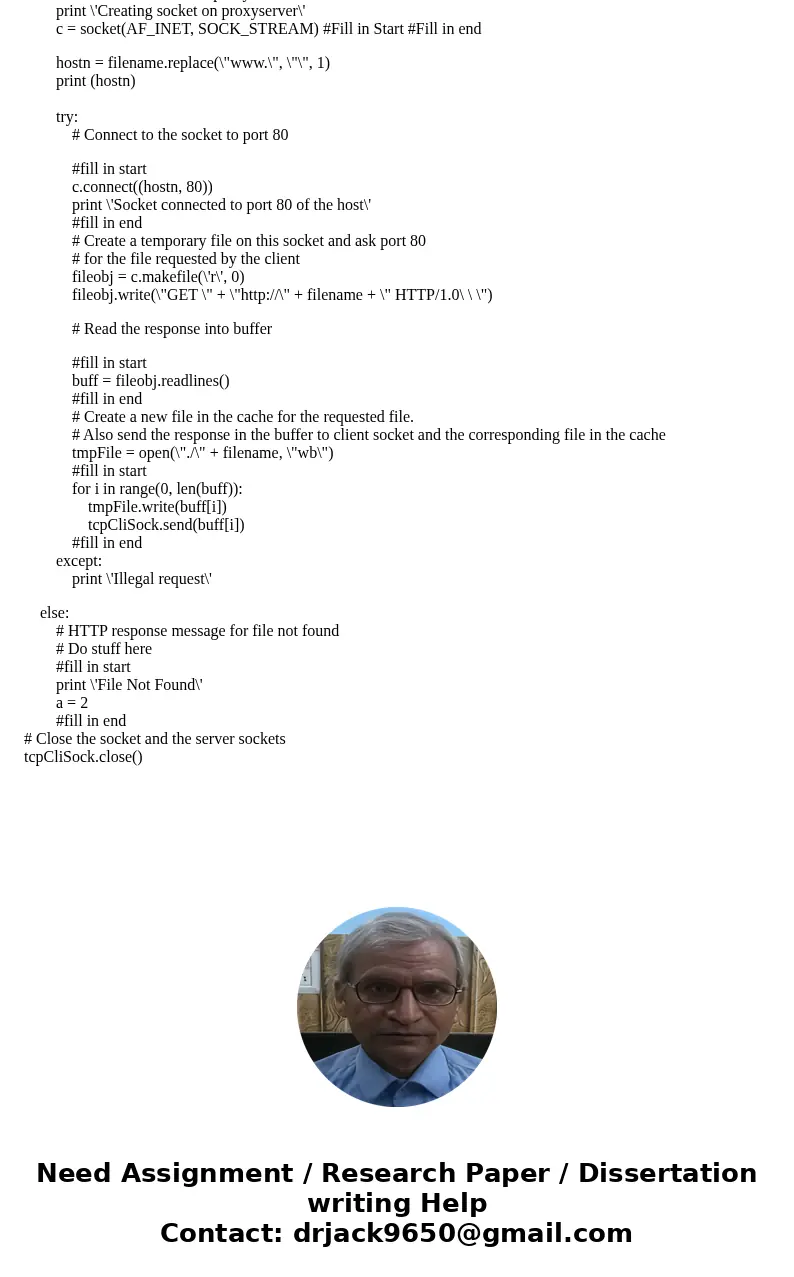Code Below you will find the skeleton code for the client Yo
Solution
from socket import *
import sys
#print len(sys.argv)
if len(sys.argv) <= 1:
print \'Usage: \"python ProxyServer.py server_ip\"\ [server_ip : It is the IP Address of the Proxy Server\';
sys.exit(2)
# Create a server socket, bind it to a port and start listening
tcpSerPort = 8888
tcpSerSock = socket(AF_INET, SOCK_STREAM)
# Fill in start
# Prepare a server socket
tcpSerSock.bind((\'\', tcpSerPort))
tcpSerSock.listen(5)
#Fill in end
while 1:
# Start receiving data from the client
print \'Ready to serve...\'
tcpCliSock, addr = tcpSerSock.accept()
print \'Received a connection from: \', addr
message = tcpCliSock.recv(1024) #Fill in start # Fill in end
# Extract the filename from the given message
print message.split()[1]
filename = message.split()[1].partition(\"/\")[2]
print (filename)
fileExist = \"false\"
filetouse = \"/\" + filename
print (filename)
try:
# Check whether the file exists in the cache
f = open(filetouse[1:], \"r\")
outputdata = f.readlines()
fileExist = \"true\"
# ProxyServer finds a cache hit and generates a response message
tcpCliSock.send(\"HTTP/1.0 200 OK\ \ \")
tcpCliSock.send(\"Content-Type:text/html\ \ \")
#Fill in Start
# Send the content of the requested file to the client
for i in range(0, len(outputdata)):
tcpCliSock.send(outputdata[i])
#Fill in End
print (\'Read from cache\')
# Error handling for file not found in cache
except IOError:
if fileExist == \"false\":
# Create a socket on the proxyserver
print \'Creating socket on proxyserver\'
c = socket(AF_INET, SOCK_STREAM) #Fill in Start #Fill in end
hostn = filename.replace(\"www.\", \"\", 1)
print (hostn)
try:
# Connect to the socket to port 80
#fill in start
c.connect((hostn, 80))
print \'Socket connected to port 80 of the host\'
#fill in end
# Create a temporary file on this socket and ask port 80
# for the file requested by the client
fileobj = c.makefile(\'r\', 0)
fileobj.write(\"GET \" + \"http://\" + filename + \" HTTP/1.0\ \ \")
# Read the response into buffer
#fill in start
buff = fileobj.readlines()
#fill in end
# Create a new file in the cache for the requested file.
# Also send the response in the buffer to client socket and the corresponding file in the cache
tmpFile = open(\"./\" + filename, \"wb\")
#fill in start
for i in range(0, len(buff)):
tmpFile.write(buff[i])
tcpCliSock.send(buff[i])
#fill in end
except:
print \'Illegal request\'
else:
# HTTP response message for file not found
# Do stuff here
#fill in start
print \'File Not Found\'
a = 2
#fill in end
# Close the socket and the server sockets
tcpCliSock.close()


 Homework Sourse
Homework Sourse